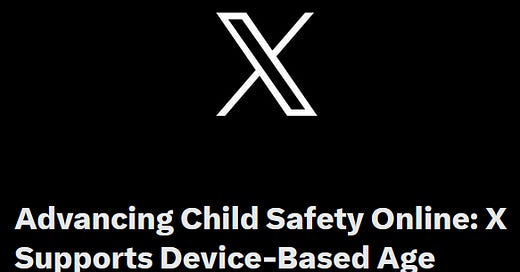After communicating with numerous people and gauging the response, apparently, many do not seem to understand the problem. There are those who react to the erotic concerns, from prudish people to perverted people. Other concerns are woefully outdated.
Just 30 years ago, pornography was contained by physical restraints of photo chemistry processes and paper publication. Most of it was published on a monthly basis. This limited what would actually be put out. Also, like all sorts of stuff, it could be thrown away.
With the internet, photo technology, and smartphones, the access to pornography is now 24 hours a day, seven days a week from all over the world. There is nothing to “throw away”. It is shared with ease without restrictions. All sorts of types of porn are made as there is little to restrict the making of it. AI is creating all sorts of porn.
The impact has been to create a range of anti-social and aberrant behaviors, as well as fears. Also, the efforts to control it fail as those in charge of monitoring such digital technology are shocked, and burnout on what they see (https://dailycaller.com/2025/05/12/pornhub-staff-worried-about-going-to-jail-for-child-porn-downloaded-from-their-companys-own-website-docs-show/).
The digital pool of pornography expands every day. Unfortunately, many legislators simply do not understand the power of the technology they are legislating over. This is also true of activists demanding restrictions on porn.
Elon Musk’s team at X, the social media, has been advocating device-based age verification (https://x.com/GlobalAffairs/status/1905297118534754707). They have it right, but who in Nebraska is listening? Since few click on the links here, I post the X team words precisely below:
Safeguarding minors in the fast-evolving digital landscape is a priority for policy makers, parents, and X. It is clear that platform-specific tools alone aren't enough. An industry-wide solution is required, and that solution is using device-based age verification through app stores and operating systems. This is the most comprehensive, effective, and privacy-preserving approach to address online child safety globally.
In this model, a user or their parent verifies the user’s age through the device’s operating system— whether on a smartphone, tablet, or other connected device. The user’s age range is then securely stored within the operating system, enabling app stores, websites, and online services to access a simple signal indicating the user age category (e.g., under 13, 13-17, 18+). No sensitive personal data— such as names, addresses, or exact birth dates— is shared, minimizing privacy risks while maximizing efficacy. By sending a simple eligibility signal to platforms like X, compliance with age restrictions without compromising security becomes seamless.




